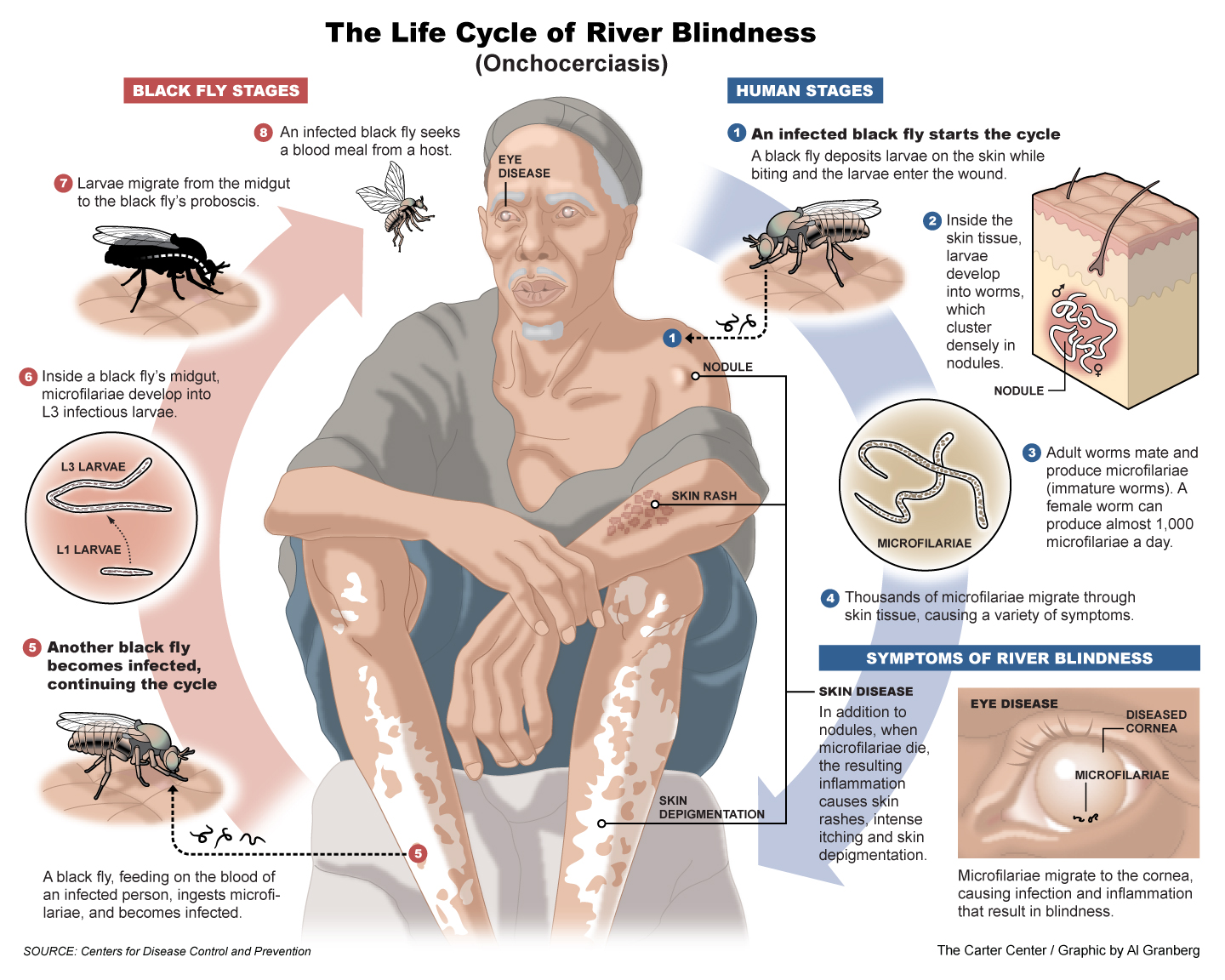Introduction
Onchocerciasis is caused by the nematode onchocerca volvulus which is characterized by ocular lesions. It is prevalent throughout eastern central and western Africa, which is the major cause of blindness. The disease is in fast flowing rivers where black flies breed.
Mode of spread: through the bite of black flies.
Incubation period: 10-12 months.
Life Cycle
Infective larvae are injected into human skin by the female black fly (simuliumdamnosun) where they develop into adult form in 8-10 months. The gravid female releases microfilaria larvae, which are distributed in the skin and the eyes.
They are then picked by the black fly during feeding. The larvae migrate from the gut of the black fly to the thoracic muscle, through the head and finally to the salivary glands and are transmitted to second host during feeding.
 |
| Photo by The Carter Center |
Signs and Symptoms
- Nodular lesions in the skin.
- Skin rash.
- Photophobia.
- Intense skin itching.
- Blindness.
Diagnosis
- Presence of microfilaria in small skin microscopy.
- Eye examination.
Treatment
- Give ivermectin. P.o.stat (150mcg/kg) you may repeat dose when patient is symptomatic.
- Doxvcvcline 100mg p.obd for 4-6weeks reduces microfilaria in skin.
Read Also








0 Comments